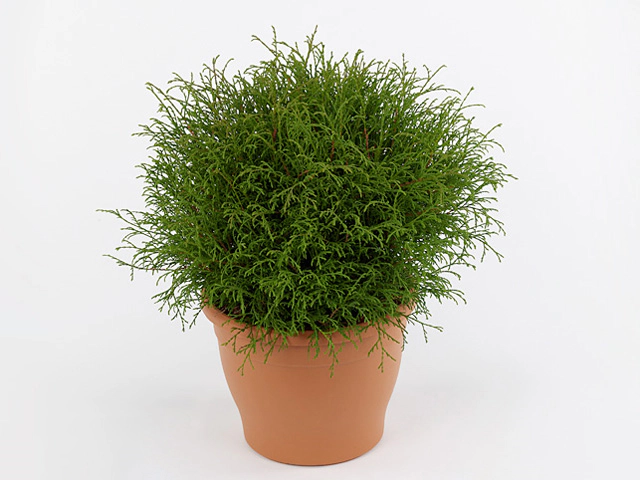Thuja occidentalis 'Mr. Bowling Ball'

| Leaf type | Scale |
| Plant height | 30 - 40 cm; 70 - 80 cm |
| Structure (tissues) | Woody |
| Leaf duration | Evergreen |
| Light conditions | Semi-shades; Shady |
| Plant, growth type | Erect |
| Leaf, main color | Dark green |
| Leaf colour, pattern | Unicolored |
| Toxicity (if consumed) | Highly toxic |
| Moisture requirements | Moist |
The Thuja occidentalis 'Mr. Bowling Ball,' also known as Arborvitae or American Arborvitae, is a unique and highly sought-after plant known for its distinct characteristics. This woody evergreen has a scale leaf type and can reach a height of 30-40 cm or 70-80 cm, depending on the variety.
This plant is commonly grown in semi-shady to shady areas, making it an excellent choice for gardens with limited sunlight. Its erect growth type adds to its appeal and makes it easy to incorporate into landscaping designs.
The leaves of the 'Mr. Bowling Ball' arborvitae are a dark green color with a unicolored pattern, giving them a rich and vibrant appearance. However, it is essential to note that this plant is highly toxic if consumed, so caution should be exercised when planting it around children or pets.
In terms of moisture requirements, the 'Mr. Bowling Ball' prefers a moist environment. Adequate watering and ensuring proper drainage are necessary for the plant to thrive. Overwatering should be avoided, as it can lead to root rot and other issues.
The 'Mr. Bowling Ball' arborvitae is a popular choice among gardeners and landscapers due to its unique appearance and low maintenance needs. Its compact growth habit and dense foliage make it ideal for hedges or as a standalone specimen in a garden or yard.
To promote healthy growth and maintain its desired shape, regular pruning is recommended. The 'Mr. Bowling Ball' arborvitae is relatively easy to maintain, making it an excellent choice for both experienced gardeners and beginners.
In conclusion, the Thuja occidentalis 'Mr. Bowling Ball' is a striking plant with its dark green, unicolored leaves and compact growth habit. While it requires semi-shade to shady conditions and moist soil, it rewards gardeners with its beauty and low maintenance needs. However, it is crucial to be cautious of its highly toxic nature, especially if there are children or pets around. By providing the necessary care, this 'Tree of Life' can thrive and bring beauty to any landscape.
Market availability index by month:
| Jan. | Feb. | Mar. | Apr. | May | Jun. | Jul. | Aug. | Sep. | Oct. | Nov. | Dec. |
|---|---|---|---|---|---|---|---|---|---|---|---|
| 1 | 1 | 4 | 3 | 3 | 2 | 1 | 3 | 3 | 3 | 2 | 1 |